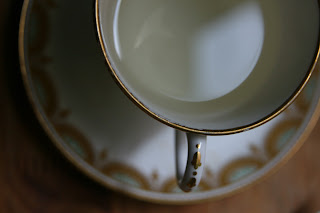 Name; Huo Shan Yellow Buds 2011
Name; Huo Shan Yellow Buds 2011Type; Yellow, China, Anhui, Hu Shan Sun Town
Price; £ 8.25 for 50 grams from Jing.
http://jingtea.com/tea/type/yellow/huo-shan-yellow-buds
Infusion: Glowingly translucent, straw-pale liquor
Aroma: Soft, vivacious, freshly sappy aroma of great charm and discretion, with a faintly toasty edge.
Taste: Sappy liquor with vivid, chlorophyll-fresh edge leading to a soft, open middle palate with a nourishing pea and hazel sweetness. ”
Review; A yellow tea, that often forgotten brother of white. Not quite a green but still enough of an outcast. An over simplification of yellow teas are that they are white teas that undergo a sweltering process for over an hour. This humid tea sauna changes the characteristics to allow for a different type of oxidation.
 Diving into this tea, we must first examining the
leaves. I could believe this is a green
tea. Yellow teas similar to oolongs that
have a wide spectrum to cover tend to fall into either over-oxidized or under
oxidized. If I was in a shop I would
think this was a green tea not a white.
Granted I have had limited experiences with yellow teas (read only 1 or
2 before this tea), but I smell the same soft metallic edge. I also note that there is more a green edge
to it. Almost a caramelized candied
apples. The softer edge of a sheng pu-erh
Diving into this tea, we must first examining the
leaves. I could believe this is a green
tea. Yellow teas similar to oolongs that
have a wide spectrum to cover tend to fall into either over-oxidized or under
oxidized. If I was in a shop I would
think this was a green tea not a white.
Granted I have had limited experiences with yellow teas (read only 1 or
2 before this tea), but I smell the same soft metallic edge. I also note that there is more a green edge
to it. Almost a caramelized candied
apples. The softer edge of a sheng pu-erh
The leaves have a most beautiful appearance to them, flat
and perfect, I am impressed with the leaves themselves. Now to see if the quality of the essence
holds true.
Yep, there it is, that tell tale coppery notes I’ve tasted
before in other yellow teas. Well at
least this confirms it. There is an
element of umami, and hazelnuts. This
tea to me tastes more like a Chinese green tea, which isn’t really that
surprising. I understand why Jing
describes it as having a toasted edge, but to me, that toasted edge, and the
bitterness from the metallic nature…means that if I was doing a blind tasting I
would think this was a green tea that someone had simply used boiling water
on. Not very much distinct notes to it,
all in all a meh on the scale.
This probably is a nice tea, and I can understand a lot of
the beauty to it, however I do not believe that yellow teas will catch on in
the western market. (Unless Victoria
Beckham decides to make it her new weight-loss tea like she did with Pu-Erh.)
It’s a little on the soft side for me, I might let it over-brew just to see
what characteristics emerge. After I
let it over-brew it begins to taste a bit more like a sheng pu-erh. Same apple-bramble notes I detect in those I
taste in this.
This tea wins novelty points. It’s a yellow tea. Buy it if you’re curious about what a yellow
tea tastes like, but don’t expect something life changing. If you wanted a nice green tea…this is not
it. If you want to try a unique element
of tea that hasn’t been over-done by the west, than this is your chance to try
a “rare” tea.
Enjoy
P.S. Did anyone notice the
incredibly vague description Jing did on this tea? Clean crisp and clear. That could describe anything from window
cleaner to bleach.



